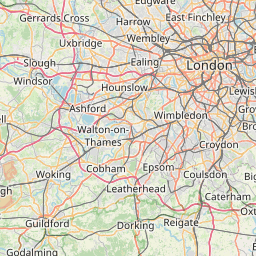Air pollution is a global problem, but due to its highly localised nature we know very little about the health effects on the individual. The UK currently has numerous reference standard air quality networks including the AURN and LAQN, but these networks have a relatively low spatial resolution and time frequency in order to meet EU Air Quality directives. In order to obtain real time data with a dense network, we need an alternative. This project focuses on low cost air quality sensor systems, designed to look at a range of pollutants including nitrous oxides, ozone, carbon monoxide and particulates. These low-cost sensor systems are advantageous, as their low price point allows many of them to be deployed over a short area, giving very dense air pollution data without requiring both the monetary and labour investment that reference equipment requires.
However, there are several limitations with this technology. The low-cost nature of these systems leads to many problems with the measurement value drifting from the real value. Degradation of the sensor components over time can lead to the initial calibration of the sensor becoming inaccurate, as well as changes in environmental conditions causing the measurement value to drift. These drifts are difficult to account for in lab-based testing as covering all possible concentrations, temperatures, humidity levels and cross-pollutant levels would be a massive undertaking and would most probably result in the cost advantage of the systems being removed. For this reason, calibration techniques must be employed that can account for the range of conditions the sensors will face.
This project aims to focus not just on the calibration of these sensors to account for these environmental conditions, but also develop techniques to maintain the calibration for as long as possible by detecting and quantifying the drift. There are currently no agreed upon standards for both calibrating low-cost sensors and determining whether they have drifted, so this project will explore several different techniques in an effort to determine the most effective ones. A test network will be deployed at the University of Surrey Guildford campus with a focus on collecting high resolution data, followed by possible further networks being set up in Delhi and Sao Paulo.
This project will be undertaken in collaboration with the National Physical Laboratory in Teddington, which not only gives access to their state of the art facilities, but also allows for collaborative work with teams that are already working in the field of low cost sensors including those working on the Breathe London project, which has recently deployed over 100 low cost sensors around Greater London.




